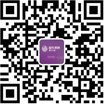2017年12月2日雅思阅读考试回忆
Reading
|
Passage 1 |
|
|
Topic |
Wall paper |
|
Content Review 文章大意:按照时间顺序展开,详细描述了墙纸的各个发展阶段。
Questions & Answers 待回忆 |
|
|
Passage 2 |
|
|
Topic |
澳洲新能源开发 |
|
Content Review Renewable Energy An insight into the progress in renewable energy research A The race is on for the ultimate goal of renewable energy.
B At the moment the front-runner in renewable energy is wind technology.
C Electricity can be produced from coal at around 4 cents per kilowatt-hour, but only if the environmental costs are ignored.
D Australian Hydro has dozens of wind monitoring stations across Australia as part of its aim to become Australia’s pre-eminent renewable energy company.
E While wind may currently lead the way, some consider a number of technologies under development have more potential.
F One such development uses hot, dry rocks.
G No greenhouse gases are produced, but the system needs some additional features if it is to be environmentally friendly.
H Two other proposals for very different ways to harness sun and wind energy have surfaced recently.
I This year, Enviropower recognized that the quality of sunlight in the Mildura district will require a substantially larger collecting area than was previously thought.
J Another Australian company, Wavetech, is achieving success with ways of harvesting the energy in waves.
K The diversity of forms of greenhouse -friendly energy under development in Australia is remarkable.
Questions & Answers Questions 14-20 TFNG 14. Alternative energy is less expensive than traditional energy. F (答案在C段) 15. The system from Geoenergy needs to be adjusted to reduce its environmental impact. T (对应C段句) 16. Dr Prue Chopra studies the effect of radon gases on environment. NG (对应C段) 17. Hot rocks can provide enough energy for the whole country. T (对应C段) 18. The new Enviropower facility will keep tourists away. F 19. Wavetech was established when its founders were turned down by another company. T 20. According to AEA, Australia is leading the world’s renewable energy production. F (对应K段,but the reality is we are a long way behind)
Questions 21-26 Matching 21. The gas is trapped inside the system and can’t escape. B (答案在G段) 22. Water pushes air through a special devise. D (答案在J段) 23. The technology used copys that of the other countries. A (答案在B段) 24. The system includes more service other than power generation. C (答案在I段) 25. The water is pushed deep underground. B (答案在G段) 26. Estimates about a particular plan has been revised. C (答案在I段)
A. Australian Hydro B. Geoenergy C. EnviroPower D. Wavetech |
|
|
Passage 3 |
|
|
Topic |
短信参与电视节目 |
|
Content Review Texting the television P1: THERE was a time when any self-respecting television show, particularly one aimed at a young audience, had to have an e-mail address. But on Europe's TV screens, such addresses are increasingly being pushed aside in favour of telephone numbers to which viewers can send text messages from their mobile phones. And no wonder: according to research about to be published by Gartner, a consultancy, text messaging has recently overtaken Internet use in Europe (see chart). One of the fastest-growing uses of text messaging, moreover, is interacting with television. Gartner's figures show that 20% of teenagers in France, 11% in Britain and 9% in Germany have sent messages in response to TV shows.
P2: This has much to do with the boom in “reality TV” shows, such as “Big Brother”, in which viewers' votes decide the outcome. Most reality shows now allow text-message voting, and in some cases, such as the most recent series of “Big Brother” in Norway, the majority of votes are cast in this way. But there is more to TV-texting than voting. News shows encourage viewers to send in comments; games shows allow viewers to compete; music shows take requests by text message; and broadcasters operate on-screen chatrooms. People tend to have their mobiles with them on the sofa, so “it's a very natural form of interaction,” says Adam Daum of Gartner.
P3: It can also be very lucrative, since mobile operators charge premium rates for messages to particular numbers. The most recent British series of “Big Brother”, for example, generated 5.4m text-message votes and £1.35m ($2.1m) in revenue. According to a report from Van Dusseldorp & Partners, a consultancy based in Amsterdam, the German edition of MTV's “Videoclash”, which invites viewers to vote for one of two rival videos, generates up to 40,000 messages an hour, each costing euro0.30 ($0.29). A text contest alongside the Belgian quiz show “1 Against 100” attracted 110,000 players in a month, each of whom paid euro0.50 per question in an eight-round contest. In Spain, a cryptic-crossword clue is displayed before the evening news broadcast; viewers are invited to text in their answers at a cost of euro1, for a chance to win a euro300 prize. On a typical day, 6,000 people take part.
P4: TV-related text messaging now accounts for an appreciable share of mobile operators' data revenues. In July, a British operator, mmO2, reported better-than-expected financial results, thanks to the flood of messages caused by “Big Brother”. Operators typically take 40-50% of the revenue from each message, with the rest divided between the broadcaster, the programme maker and the firm providing the message-processing system. Text-message revenues are already a vital element of the business model for many shows. Inevitably, there is grumbling that the operators take too much of the pie. Endemol, the Netherlands-based production company behind “Big Brother” and many other reality TV shows has started building its own database of mobile-phone users. The next step will be to establish direct billing relationships with them, and bypass the operators.
P5: Why has the union of television and text message suddenly proved so successful? One important factor is the availability of special four-, five- or six-digit numbers, called “shortcodes”. Each operator controls its own shortcodes, and only relatively recently have operators realised that it makes sense to co-operate and offer shortcodes that work across all networks. The availability of such common shortcodes was a breakthrough, says Lars Becker of Flytxt, a mobile-marketing firm, since shortcodes are far easier to remember when flashed up on the screen.
P6: The operators' decision to co-operate in order to expand the market is part of a broader trend, observes Katrina Bond of Analysys, a consultancy. Faced with a choice between protecting their margins and allowing a new medium to emerge, operators have always chosen the first. WAP, a technology for reading cut-down web pages on mobile phones, failed because operators were reluctant to share revenue with content providers. Having learnt their lesson, operators are changing their tune. In France, one operator, Orange, has even gone so far as to publish a rate card for text-message revenue-sharing, a degree of transparency that would once have been unthinkable.
P7: At a recent conference organised by Van Dusseldorp & Partners, Han Weegink of CMG, a firm that provides text-message infrastructure, noted that all this is subtly changing the nature of television. Rather than presenting content to viewers, an increasing number of programmes involve content that reacts to the viewer's input.
P8: That was always the promise of interactive TV, of course. Interactive TV was supposed to revolve around fancy set-top boxes that plug directly into the television. But that approach has a number of drawbacks, says Mr Daum. It is expensive to develop and test software for multiple and incompatible types of set-top box, and the market penetration, at 40% or less, is lower than that for mobile phones, which are now owned by around 85% of Europeans. Also, mobile-phone applications can be quickly developed and set up. “You can get to market faster, and with fewer grasping intermediaries,” says Mr Daum. Providers of set-top box technology are adding text-messaging capabilities to their products.
P9: The success of TV-related texting is a reminder of how easily an elaborate technology can be unexpectedly overtaken by a simpler, lower-tech approach. It does not mean that the traditional approach to interactive TV is doomed: indeed, it demonstrates that there is strong demand for interactive services. People, it seems, really do want to do more than just stare at the screen. If nothing else, couch potatoes like to exercise their thumbs.
Questions & Answers Questions 27-31 27. Paragraph 1: a number of Europeans chose to interact with television by texting (Gartner's figures show that 20% of teenagers in France, 11% in Britain and 9% in Germany have sent messages in response to TV shows.) 28. Paragraph 2: why it has been developing so fast (“reality TV” shows, such as “Big Brother) 29. Paragraph 3-4: making the gains (Operators typically take 40-50% of the revenue from each message,) 30. Paragraph 5: a breakthrough in texting (The availability of such common shortcodes was a breakthrough, says Lars Becker of Flytxt, ) 31. Paragraph 6: making the TV turn over into the function of mobile phone
Questions 32-35 32. What is the main idea of 1st paragraph? A. to show interactive TV is increasing
33. Why companies decide to make their own phone operators? C. because operators took a lot of revenues from TV companies (Operators typically take 40-50% of the revenue from each message)
34. why they choose not to use set-top boxes C. complicated and inconvenient (But that approach has a number of drawbacks, says Mr Daum. It is expensive to develop and test software for multiple and incompatible types of set-top box )
35. What does the author mean in the last paragraph? (a reminder of how easily an elaborate technology can be unexpectedly overtaken by a simpler, lower-tech approach )
Questions 36-40 36. texting message in TV Gartner (排除法) 37. operator making profits mmO2 (Operators typically take 40-50% of the revenue from each message,) 38. new technology in developing texting Flytxt (a mobile-marketing firm, since shortcodes are far easier to remember when flashed up on the screen.) 39. 待回忆 40. 待回忆 |
|
雅思阅读 课程中心
查看更多 >雅思快讯
- 随着出国留学人数的逐年增... 2018-12-14
- 雅思考试前选择培训机构学... 2018-52-14
- 一般情况下,英国越好的大... 2018-12-12
- 雅思口语学习怎样才能拿高... 2018-03-11
- 如今我国出国留学、旅行的... 2018-12-11



